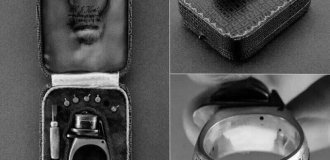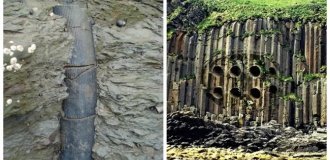4,000-year-old jewelry tools found in an ancient burial (15 photos + 1 video)
Amazing polished stones were discovered by scientists in a funeral in a mound near Stonehenge. The stones contain traces of gold and, according to experts, probably 4,000 years ago, were part of a set of tools ancient jeweler. 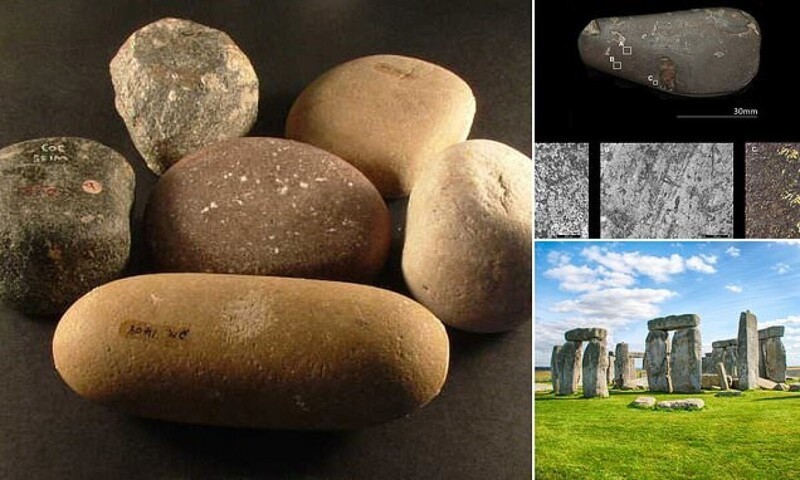
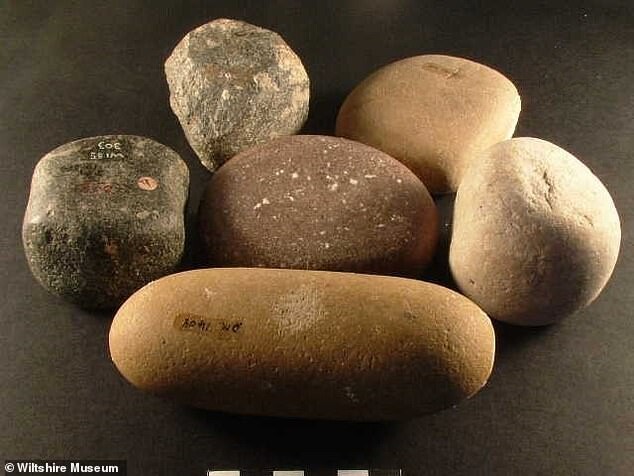
In an ancient burial near Stonehenge, archaeologists have discovered unusual polished stones. According to scientists, could be part of a set tools of an ancient jeweler. The age of the find is about 4000 years. 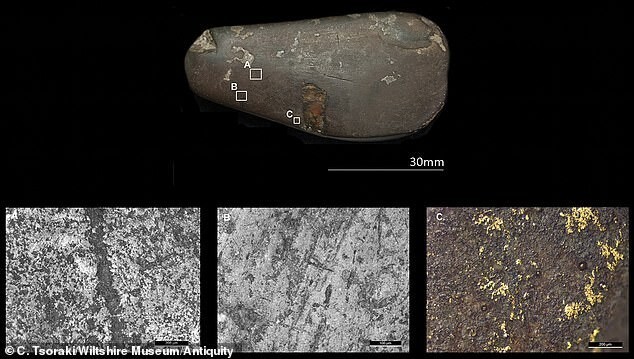
Archaeologists from the University of Leicester found on the surface stones traces of gold, indicating that they were once used in as hammers or anvils for working metals. Artifacts were buried in a Bronze Age grave in the village of Upton Lovell in Wiltshire, near Stonehenge. The first excavations took place here in 1801. 
Two people were buried in the burial mound, who, according to scientists, were a shaman and his wife during their lifetime. 
Scientists have drawn conclusions that we are talking about a shaman based on the fact that that one of the sets of skeletal remains was dressed in an intricately decorated costume including ceremonial cloak, beaded necklaces and pieces processed animal bones. There were holes in some of these bones, which suggests that they were once the fringe of an outfit or necklaces.
In the early Bronze Age, shamans were considered people capable of interact with the spirit world. And since the bones, according to ancient beliefs, were associated with death and rebirth, they symbolized the power shaman. 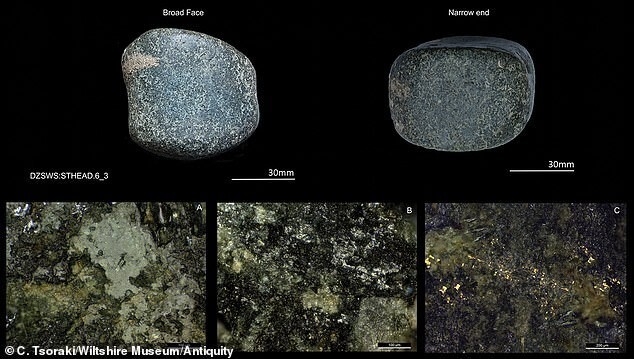
Next to the remains also lay a battle ax made of green stone and a pouch adorned with tusks of a wild boar, in which there were tools for tattoos. At the feet of the shaman was a set of hammers and grinding stones, which, according to scientists, were used to polish gold. This allowed the researcher to assume that the shaman was also a jeweler. 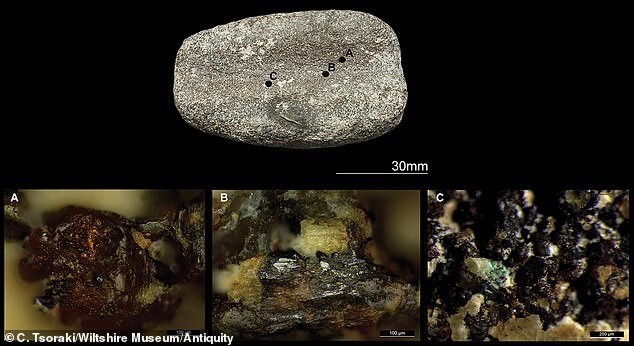
Lisa Brown, curator at the Wiltshire Museum, spoke about the find in more detail: "The man buried at Upton Lovell, near Stonehenge, was a highly skilled craftsman who specializes in the manufacture gold products. His ceremonial cloak, adorned with animal bones, also hints that he was a spiritual leader and one of the few people of the early Bronze Age who understood the magic of processing metals". 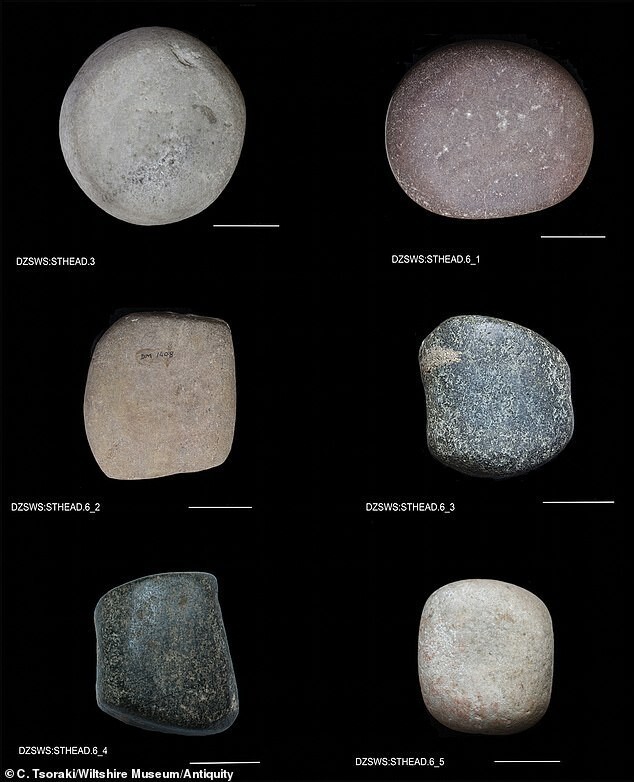
The woman buried next to him wore a necklace of polished slate beads and a thin slate ring on the hand. Also in their grave there were three polished flint axes and a battle ax made of black dolerite. Today they are on display at the Wiltshire Museum in Devizes.
The main mystery of the burial was that the bodies themselves and artifacts belong to the Neolithic period, and the burial site dates back to the period between 1850 and 1700 BC, that is, by the time of burial the bodies were already about two thousand years old. Burial located at the top ridge rising above the river valley, which leads straight to monoliths of Stonehenge. 
Gold, which was first discovered on one of the objects burials back in the 2000s, suggested that they once used to flatten precious metal into sheets. However However, scientists wanted to use more modern methods by looking at other stone and copper alloy artifacts to confirm the results research. 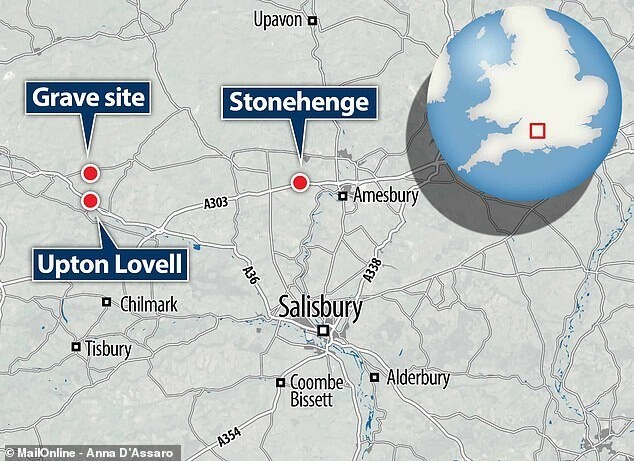
Researchers conducted micro-wear analysis using high-powered microscopes to examine the marks on the surface of the instruments in order to better understand how they were made and used. At the same time, it was found that four artifacts have traces of gold, which has been confirmed as prehistoric and had impurities consistent with gold items Bronze Age, found in different places in Great Britain. 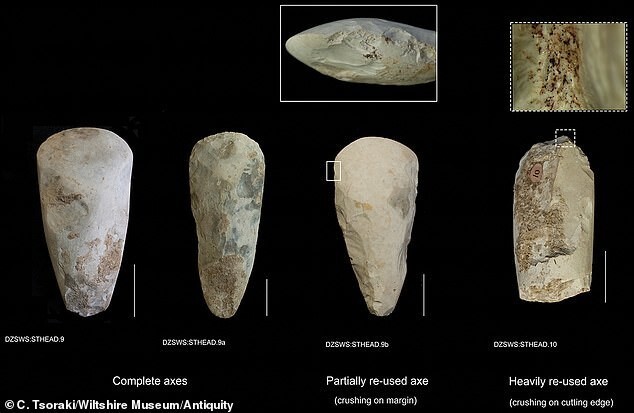
The wear and tear of the instruments showed that each was used for different purposes. goals. Among them were hammers, anvils and tools for sheet smoothing. They were also used to give shape to others materials other than gold, such as amber, wood, copper, jet and slate. 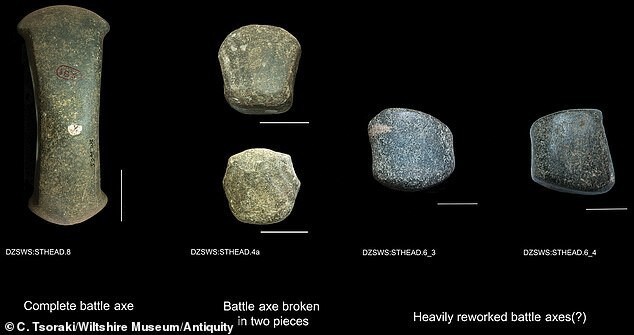
The finds add weight to the idea that the shaman buried in the barrow was known for his metalworking skills as well as his spiritual forces, and the community considered it important to bury him along with his tools. 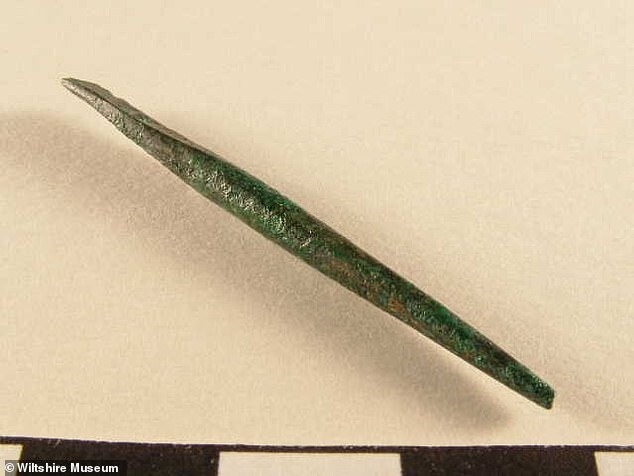
“This is a really exciting find for our project,” says lead author, Dr. Rachel Crellin. Our work has revealed humble stone tools that were used to make gold items thousands of years ago 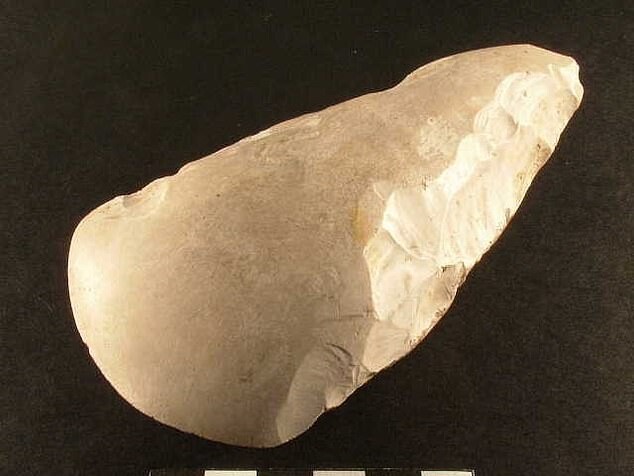
Co-author Dr. Oliver Harris added: “Our study shows that how much more can we learn about how they were made and objects of the past were used when we look at them with cutting edge modern equipment. 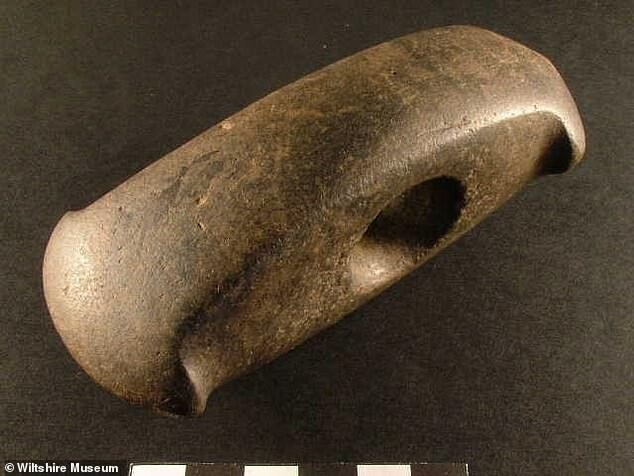
“The find will help us understand the complex processes involved in making gold objects in the Bronze Age, and shows the enduring importance museum collections,” says Harris.







